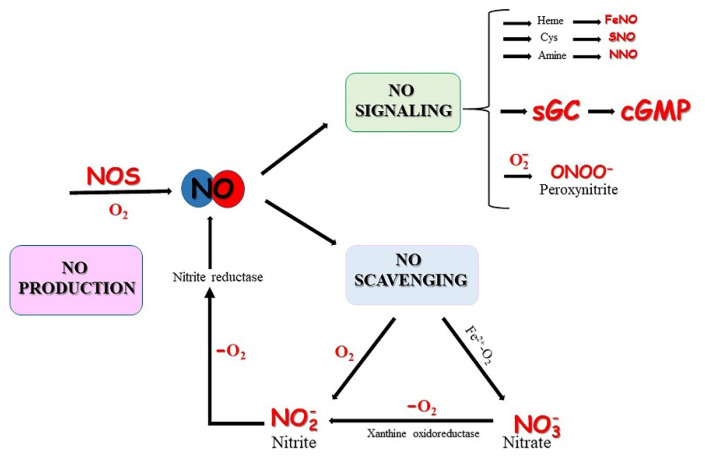Figure 1.
Production and fate of NO. The major enzymatic pathway for NO synthesis is catalyzed by NOS isoforms in the presence of O2. Once produced, NO can be rapidly converted to nitrite with dissolved O2 by NO scavenging reactions, or can be inactivated to nitrate by oxygenated heme proteins. When de novo production via NOS is compromised under low O2, NO can be produced by the reduction nitrite in heme proteins, or by nitrate conversion to nitrite by xanthine oxidoreductase. NO signaling occurs by binding to (i) sGC promoting the canonical cGMP cascade, or (ii) heme-containing proteins, thiols, or amines, forming iron-nitrosyl (FeNO), S-nitroso (SNO) and N-nitroso (NNO) compounds promoting protein post-translational modifications. Excess NO can react with superoxide to form peroxynitrite (ONOO−), which in turn can react with lipids, DNA, protein thiols, and oxidize cysteine residues.

